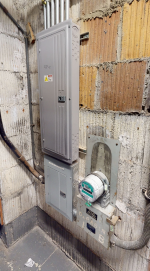Some electrical equipment is mounted and bolted directly onto the wall without kindorf.
Sometimes a kindorf is used and mounted onto a wall and then the electrical equipment is mounted onto the kindorf...
Can vertical wireways be mounted onto the wall without kindorf?
When is kindorf really necessary for mounting electrical equipment on the wall?
Sometimes a kindorf is used and mounted onto a wall and then the electrical equipment is mounted onto the kindorf...
Can vertical wireways be mounted onto the wall without kindorf?
When is kindorf really necessary for mounting electrical equipment on the wall?

